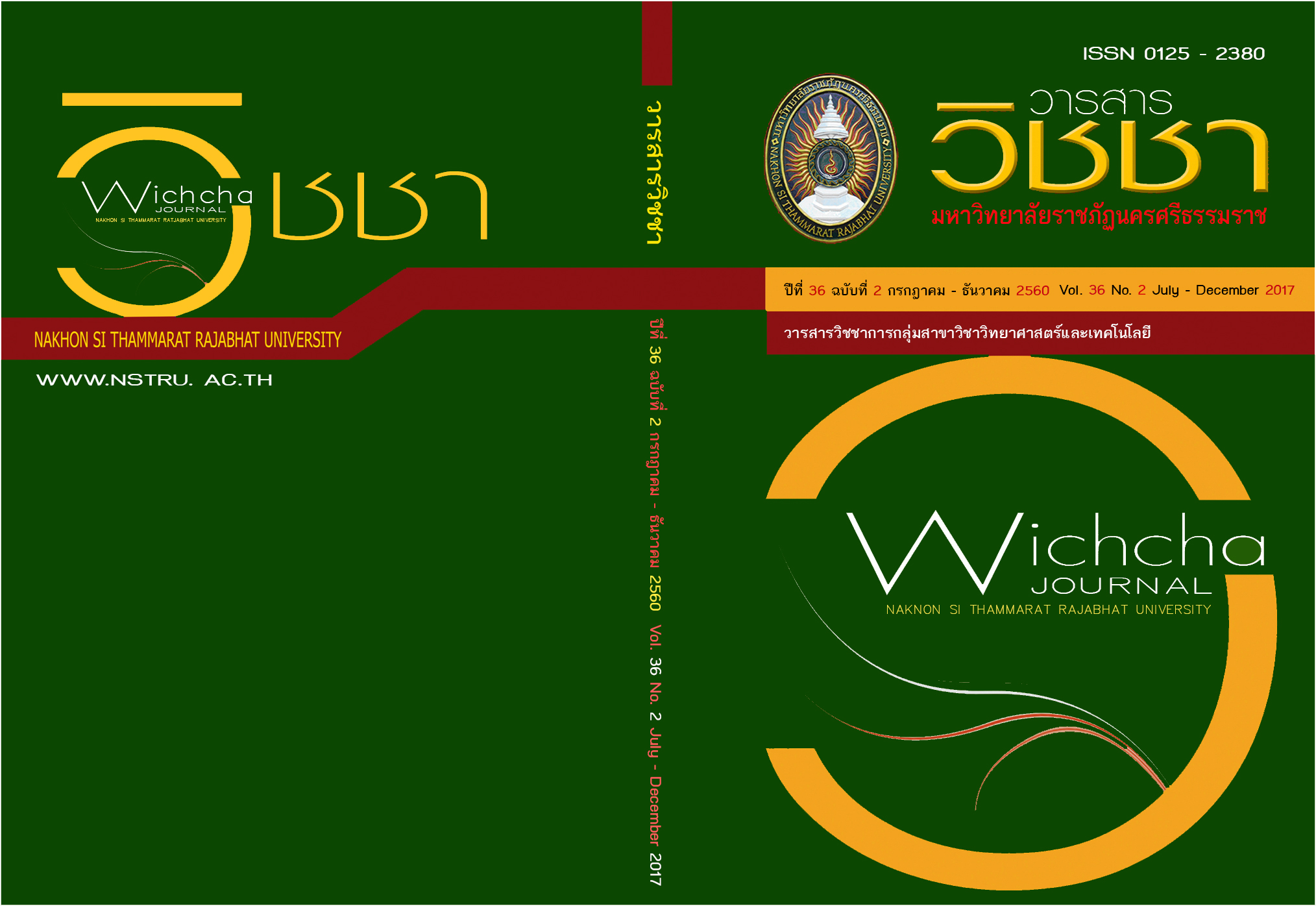Isolation of Phosphate Solubilizing Bacteria from Soil and Optimization for Groeth and Phosphate Solubilization
Main Article Content
Abstract
Bacteria were able to solubilize phosphate available to plant from insubilize phosphate such as tricalcium phosphate (Ca3(PO4)2), ferric phosphate (FePO4) and aluminum phosphate (AlPO4) that their effectiveness on promoting the plant growth. This research aimed to screen phosphate solubilizing bacteria from soil from plantation of rice, rubber, palm and vegetable in Nakhon Si Thammarat by Pikovskaya agar and test effectiveness of Phosphate solubilization in liquid media by Watanabe and Olsen’s method. The results showed that 17 isolates of phosphate solubilizing bacteria was obtained from all sources of soil. The most effective isolate was VP2 isolated from vagatable plantation gave higher solubilized activity (halozone of 15 mm). After that, the optimal conditions for VP2 growth and phosphate solubilization activity were studied by modified compostions of Pikovskaya medium (PVK medium) by conventional method. The optimal compositions of medium were contained with glucose 7.5 g/L as carbon source, (NH4)2SO4 6 g/L as nitrogen source, yeast extract 0.2 g/L and other composition of PVK medium. The physiochemical conditions were adjusted initial pH of culture medium at 6.0 or 7.0 and aeration rate of 2.0 vvm. Under the optimal condition, the maximum of VP2 growth and phosphate solubilization were 5.91 g/L DCW and 44.42 mg/L, respectively.
Article Details
เนื้อหาและข้อมูลในบทความที่ลงตีพิมพ์ในวารสารวิชชา มหาวิทยาลัยราชภัฏนครศรีธรรมราช ถือเป็นข้อคิดเห็นและความรับผิดชอบของผู้เขียนบทความโดยตรง ซึ่งกองบรรณาธิการวารสารไม่จำเป็นต้องเห็นด้วยหรือร่วมรับผิดชอบใด ๆ
บทความ ข้อมูล เนื้อหา รูปภาพ ฯลฯ ที่ได้รับการตีพิมพ์ในวารสารวิชชา มหาวิทยาลัยราชภัฏนครศรีธรรมราช ถือเป็นลิขสิทธ์ของวารสารวิชชา มหาวิทยาลัยราชภัฏนครศรีธรรมราช หากบุคคลหรือหน่วยงานใดต้องการนำข้อมูลทั้งหมดหรือส่วนหนึ่งส่วนใดไปเผยแพร่ต่อหรือเพื่อการกระทำการใด ๆ จะต้องได้รับอนุญาตเป็นลายลักษณ์อักษรจากวารสารวิชชา มหาวิทยาลัยราชภัฏนครศรีธรรมราชก่อนเท่านั้น
The content and information in the article published in Wichcha journal Nakhon Si Thammarat Rajabhat University, It is the opinion and responsibility of the author of the article. The editorial journals do not need to agree. Or share any responsibility.


